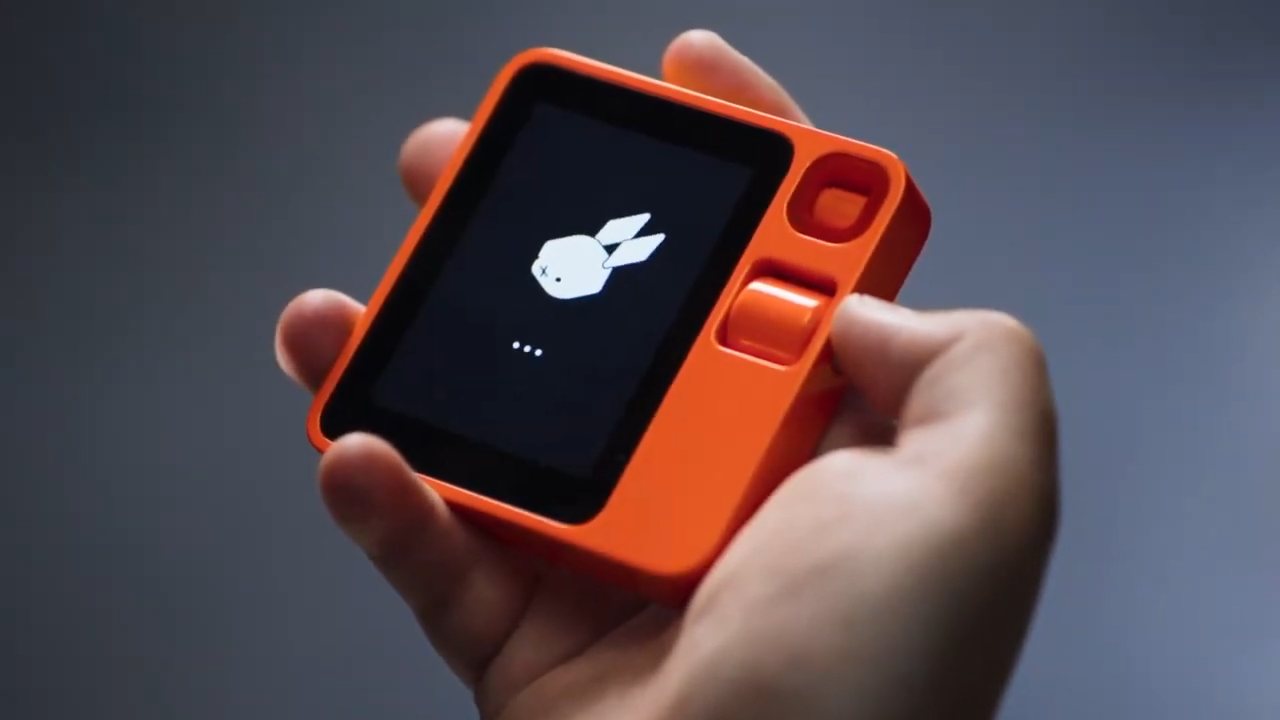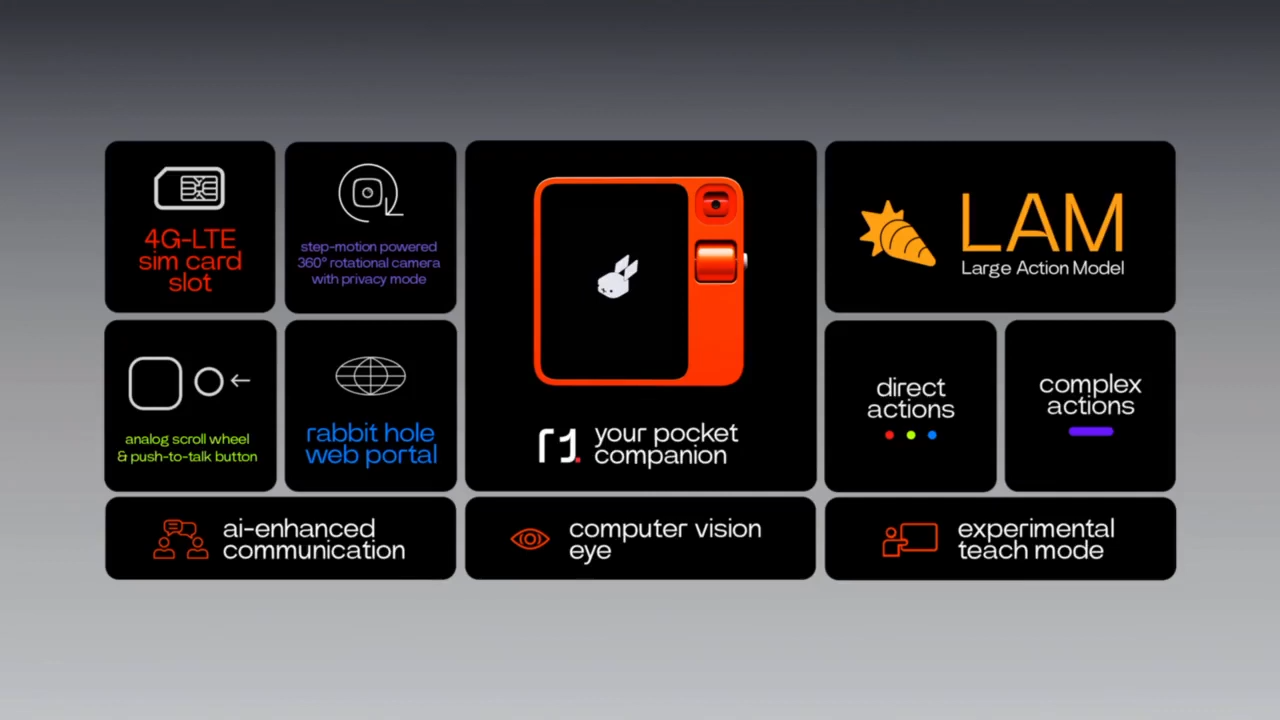Rabbit's R1 AI first hardware sold out the first three batches in four days

Key Points
- AI startup Rabbit introduces the R1, a $199 standalone AI device that serves as a universal controller for applications and is primarily voice-controlled.
- The R1 is powered by a Large Action Model (LAM) that has been trained with human interaction data and can control existing apps without native support.
- The device has a training mode in which the user can teach the R1 specific actions. Interaction takes place through a user interface designed for humans, which explains why the R1 is claimed to be so universal.
Update –
- Added sales figures
Update from January 14th:
Rabbit's pocket-sized AI device has sold out its first three batches of 10,00 units each in just four days after its initial announcement.
The startup announced on X (formerly Twitter) that it sold its first batch of 10,000 units in a single day, exceeding its internal target by 20 times. "When we started building r1, we said internally that we'd be happy if we sold 500 devices on launch day," the startup wrote on X.
The first batch of preorders will begin shipping in March, with the second, third, and fourth batches expected to ship between May and July 2024.
Original article from January 9:
Rabbit R1 is AI-first hardware featuring a large action model that learns to use apps
AI startup Rabbit has unveiled the R1, a $199 standalone AI device that serves primarily as a voice-controlled universal controller for apps.
The R1 is powered by a Large Action Model (LAM), which has been trained with interaction data from people interacting with apps such as Spotify and Uber.
This training is supposed to enable the system to interact with existing applications without having to rely on native app support, as Alexa or Google Assistant do. The hybrid approach combines the pattern recognition of neural networks with the reasoning of symbolic AI, resulting in a versatile and adaptable AI assistant. The LAM is the real star behind the R1.
Video: Rabbit
Like LLMs, the LAM can be easily controlled using natural language via the pre-installed Rabbit OS. If you like, the R1 is the first iteration of hardware for a next-generation AI assistant that performs tasks over the Internet as you need them, such as turning on music, ordering transportation, shopping, or sending messages. But because the LAM can operate the user interfaces designed for humans, the R1 does not need special interfaces. This supposedly makes the device versatile.
The R1 also has a special training mode that allows users to teach the device to perform specific actions. Rabbit OS can even learn multi-step tasks in complex applications like Photoshop and perform them on voice command, the company claims.
The device itself is not designed to collect data, as all data is processed by the apps themselves. Of course, you have to log into your web accounts through Rabbit OS.
Lots of AI, little hardware
The Rabbit R1 was developed in collaboration with Teenage Engineering. About half the size of an iPhone, it has a 2.3GHz MediaTek processor, 4GB of RAM, and 128GB of storage.
It features a 2.88-inch touchscreen, a rotating camera, and a scroll wheel/navigation button that can be controlled directly on the device or by voice via a far-field microphone.

According to Rabbit CEO Jesse Lyu, the vision for the R1 is a combination of voice assistant, screen, and camera. It's more likely to compete with devices like Humane's new AI Pin rather than the iPhone, says founder Lyu - it's an example of a new generation of AI-first devices just coming to market. Smart assistants like Alexa and the like are outdated compared to the R1, Lyu says.
You can pre-order the R1 from the company's website, and it is expected to ship in March. The price is 199 US dollars.
AI News Without the Hype – Curated by Humans
As a THE DECODER subscriber, you get ad-free reading, our weekly AI newsletter, the exclusive "AI Radar" Frontier Report 6× per year, access to comments, and our complete archive.
Subscribe now